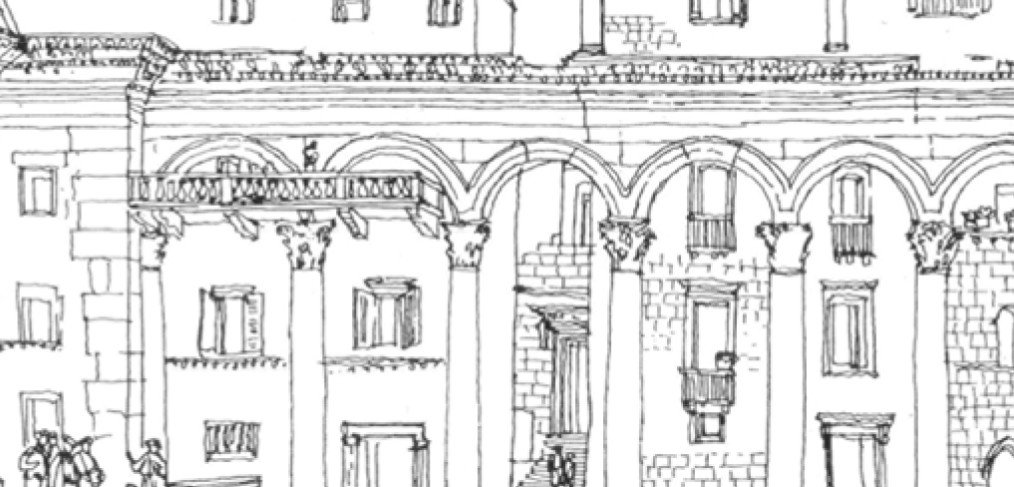
The Incessant Meaning: Thoughts on Dwelling and Permanence
Author: Ana Patrícia Marcelo Pires
In the essay Building Dwelling Thinking Heidegger defines as Dwelling the way in which each of us exists on earth; the way how each of us lets himself be at peace, free, guarded from any type of damage. Dwelling is essentially preserving, leaving something in its essence from the beginning. Building, in turn, unfolds into the building that preserves growth and the building that erects buildings. From this relationship between Dwelling and Building, one can conclude that the built environment does not rule Dwelling, on the contrary, it´s Dwelling that defines it. In fact, “we dwell not because we build, but we build and we built as we dwell” .
The existence of an uniformizing language for architecture has little meaning in this context, since the built environment comes in response to the specific needs of the community to which it is intended, needs that are certainly different from those of any other group. In this perspective, architecture does not intend to criticize, shape or uniformize habits; it intends only the organization of space according to the necessary purposes. This organization is defined by the ‘original’ purpose – by the function’s practical criteria for which the built environment is being designed – by the historical norm related to this purpose, by the social organization of the group to which it is intended and by the individuality not only of those who design but also of those who will use. In fact, it is inescapable that the subjectivity of the man who designs is somehow reflected in his work. Not viewing architecture as a means for the author’s personal assertion, it is intended that the built environment manages to be trans-subjective, this is, it is intended that the author´s work manages to move its inhabitants and that they, therefore, ‘share’ what, from the outset, belongs only to the author. The designer is always perceptible on what he creates, however, that presence should be of lesser importance than considering the user in all its aspects.

A structure capable of containing a plurality of uses completely independent of its shape and that leaves in its user a strong memory of the experience of moving through its spaces rich in contributions of the many generations that have come to build them. – Transformation phases of Palazzo della Ragione, Padua: construction in 1218, beginning of the 14th century and end of the 15th century.
The built environment, in this way, does not impose itself to the individual or to his context; Dwelling has, therefore, the most active role. Architecture respects the man in his totality, considering him both in his anthropological aspects and individually – determined by the society to which he belongs and by his uniqueness – and is defined by him and its own history. The built environment is constructed through Dwelling, through the preservation of the place’s, people’s and their habits’ essence. Its ‘beauty’ and value can be found in the way it organizes the space and in the ability that that organization has to adapt to the transformation and even to the replacement of the originating functions’ criteria.

The appropriation and transformation of a palace into a city – Plans of Diocletian’s Palace, of its still existing fragments and of its present state, appropriated as a city, Split, Croatia.

The appropriation and transformation of a palace into a city – Appropriation of the occidental colonnade of Diocletian’s Palace.
Considering the definition of Dwelling given by Heidegger – to preserve, to leave something in its essence from the beginning – a built environment that intends, somehow, the shaping of habits and rituals does not allow Dwelling. A building may shelter the human, it might allow him all the conditions necessary for a comfortable living, but it’s only a dwelling when it respects man as a whole, that is, when it doesn’t impose a certain behavior, when it considers and guards the man’s and its rituals’ essence. Such a built environment, respecting its user in his totality and having as a goal the adaptability to the necessary transformation of uses, arises from Dwelling and has in it its incessant meaning. Naturally, a built environment cannot cover all human uses nor can adapt to all of them and to all of their changes incessantly; however, the higher is its availability for such, the greater will be its duration in time without becoming obsolete. It is intended, therefore, that a built environment, although arising from a limited set of uses, is able to keep some ‘ambiguity’, a meaning flexibility that allows it to follow the Dwelling’s evolution.
BACHELARD, Gaston – A Poética do Espaço. São Paulo: Martins Fontes Editora, 2008.
DEVILLERS, Christian – Habitat & Formes Urbaines: Typologie de l’Habitat & Morphologie Urbaine. L’Architecture d’Aujourd’hui, Recherche Habitat. Paris: Archipress & Associés, 1974. 174: p. 18-22.
HEIDEGGER, Martin – Construir Habitar Pensar.
MUKAROVSKI, Jan – “O problema das funções na arquitectura”, Escritos sobre estética e semiótica da arte. Lisbon: Editorial Estampa, 1997.
ROSSI, Aldo – A Arquitectura da Cidade. Lisbon: Cosmos, 2001.




